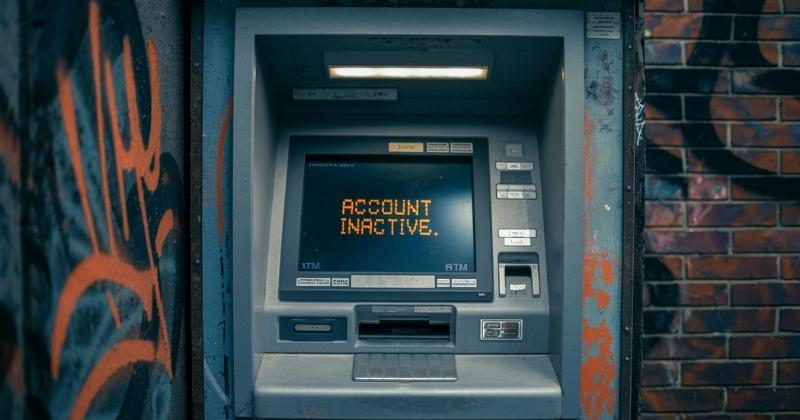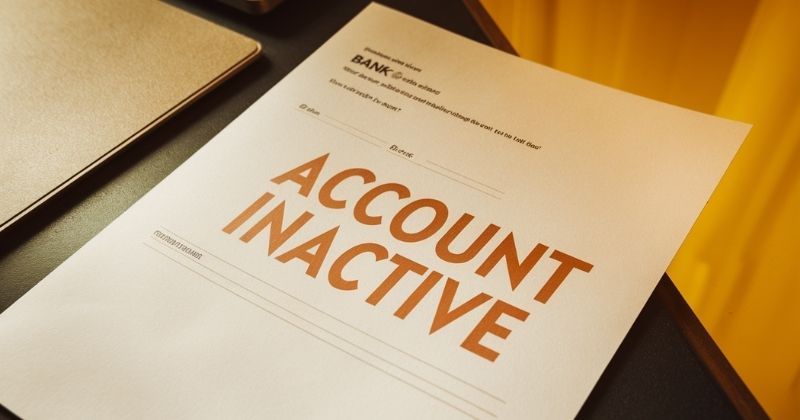
When a bank account is left unused for an extended period, it may be classified as inactive or dormant, which can lead to fees or, in some instances, the account being closed and the funds transferred to the state. This is more common than many people realise, particularly with secondary or rarely used accounts. It’s important to know how banks handle inactive accounts and what actions they take before closing them, especially for customers in South Africa.
Key takeaways
- Inactive and Dormant Accounts: In South Africa, accounts are generally considered inactive after 12 months without any transactions and dormant after 24 months. Banks may start charging fees or even close the account, transferring the remaining funds to the state as unclaimed property.
- South African Escheatment Process: In cases where an account remains dormant, the funds may be transferred to the Guardian’s Fund. However, account holders or their heirs can reclaim the money by following the necessary procedures.
- Bank-Specific Dormancy Policies: Different South African banks have varying policies regarding dormancy timelines and associated fees. For instance, FNB offers a grace period before applying fees, whereas Nedbank may begin charging sooner. It’s important to familiarise yourself with your bank’s specific rules to avoid unexpected charges or account closures.
About Arcadia Finance
Simplify Your Loan Process with Arcadia Finance – Choose from 19 Trusted Lenders, All Fully Accredited by South Africa’s National Credit Regulator, with No Application Fees. Personalized Solutions Just for You.
What is a Dormant Account?
A dormant account refers to a bank account that has not had any manual transactions, such as deposits or withdrawals, for an extended period. While interest may still be posted to the account automatically, this does not count as a valid transaction.
Before the advent of online banking and mobile apps, it was easier for people to lose track of their accounts. This often happened when individuals passed away without leaving clear instructions about their finances in their wills. In many cases, people died without having written a will at all, leaving bank accounts and other assets inactive, eventually becoming dormant.
Dormant vs. Inactive Accounts
An account is considered inactive if no manual transactions occur over 12 consecutive months. If this inactivity continues for 24 months, the account is classified as dormant. Automated deposits, such as salary payments or pension contributions, do not prevent an account from becoming dormant.
Only manual transactions initiated directly by the account holder, such as depositing funds or withdrawing money, are considered valid and can keep the account active. However, once an account is classified as dormant, even these manual deposits are no longer allowed. Interest credits or any other automated activity do not count as valid transactions. To keep an account active, the account holder must personally initiate a transaction.
Banks have varying timelines for inactivity before closure, and hidden clauses may surprise you. Get familiar with your bank’s terms and conditions to avoid unwelcome surprises and ensure your funds stay secure.

How Does an Account Become Dormant?
Dormancy in a bank account occurs after a period of inactivity. The typical process unfolds as follows:
- No Transactions for One Year
It’s easy to overlook an account, such as an emergency fund, while focusing on daily financial matters. If no transactions, such as deposits, withdrawals, or transfers, are made for a year, the account becomes inactive. Illness or death without assigning control to an heir can also result in neglect.
- Account Marked as Inactive
Once the account shows no activity, even a small withdrawal like buying a coffee, the bank flags it as inactive.
- Inactivity Fees May Be Imposed
Some banks charge inactivity fees, while others may waive them. It’s important to check your monthly bank statements or use the bank’s app to ensure no fees are being applied.
- Further Inactivity for Two More Years
After one year of inactivity, if no transactions are made for another two years, the account is typically classified as dormant. This timeframe may vary depending on the bank, with some accounts becoming dormant after three years, and others extending to five years.
- Transition to Dormant Status
The bank will usually attempt to contact the account holder. However, this can be difficult if the individual has moved without updating their details, or if they have passed away.
- Account Closure and Transfer of Funds to the State
If the account remains dormant, it may eventually be closed, with the remaining funds transferred to the state through a legal process known as escheatment. However, the account holder or their heirs can still reclaim these funds by following the appropriate procedures, even after they have been transferred to the state.
If your account has been marked dormant and shut, don’t panic. Opening a new bank account is easier than ever, with many banks offering streamlined processes.
What Occurs When a Bank Account Becomes Dormant?
Bank accounts don’t become dormant immediately. There are specific steps that banks follow before an account is officially classified as dormant.
Here’s how it generally works:
Inactivity Begins
You stop making any deposits, withdrawals, or transactions from the account for a specific period, which varies between banks.
Account Becomes Inactive
After this period of no activity, the bank labels the account as inactive. At this stage, some banks may start charging monthly or annual inactivity fees.
Dormant Status
If the account remains inactive for a further period, the bank may change its status from inactive to dormant.
Once the account is classified as dormant, the bank may move to close it. If they do not have your updated contact information, any remaining balance could be sent to the state as unclaimed property, a process governed by escheatment laws.

How to Prevent a Bank Account from Becoming Dormant
The easiest way to keep a bank account active is to maintain regular activity. Here are a few options to consider:
- Set up a recurring deposit from another account, even if it’s a small amount, on a monthly basis to show consistent activity.
- Make periodic withdrawals, whether monthly or quarterly, to keep the account active.
- Use the account for specific purposes, such as paying a recurring bill each month.
- Access your account online via internet or mobile banking to download statements or update personal details.
If you no longer plan to use a particular account, it may be more practical to close it, which could help you avoid inactivity fees. Be sure to get written confirmation from the bank to confirm the account has been closed.
Inactive accounts can result in unexpected closures, which is why selecting the right bank is crucial. Learn more about policies that matter in How to Choose a Bank in South Africa.
South African Bank Timelines for Dormancy
Banks in South Africa have their own specific policies regarding inactivity and dormancy. Here’s a breakdown of how some major South African banks handle these situations:
| Bank | Inactive Account Period | Dormant Account Period | Inactivity Fees Application | Notes |
|---|---|---|---|---|
| Standard Bank | 12 months | 24 months | After dormancy (24 months) | Inactivity fees applied once the account is marked as dormant, adding additional costs if the account remains unused. |
| ABSA | 12 months | Up to 36 months | After 36 months (in some cases) | More lenient approach with up to 36 months before dormancy, offering customers greater flexibility. |
| Nedbank | 12 months | 24 months | Potentially after 12 months | Stricter with inactivity fees, potentially applying charges after 12 months, even before dormancy. |
| FNB | 12 months | Not specified | Delayed application | Customer-friendly approach with no immediate inactivity fees, offering extra time to reactivate the account without penalties. |

South African Regulations and Escheatment Laws
In South Africa, dormant bank accounts are subject to regulations that safeguard both the account holder and the financial institution. Typically, an account becomes dormant after 24 months of inactivity, though the exact period may differ depending on the bank. Once classified as dormant, the bank may apply inactivity fees.
If the account remains dormant for an extended time, the funds may go through an escheatment process, where unclaimed money is transferred to the state. In South Africa, these funds are managed by the Guardian’s Fund under the Master of the High Court. However, even after the transfer, the original account holder or their heirs can reclaim the funds.
How to Reclaim Dormant Account Funds in South Africa
Contact the Bank
If your account has been marked dormant, contact your bank first. Banks are obligated to help account holders reactivate dormant accounts by verifying their identity and resuming transactions.
Check the Guardian’s Fund
If your funds have already been transferred to the Guardian’s Fund, you can still reclaim them. Visit the Master of the High Court’s website or contact their office to enquire about unclaimed funds.
Submit a Claim
To recover funds from the Guardian’s Fund, you’ll need to submit a formal claim with proof of identity and documentation proving your ownership of the dormant account. This process involves completing an application form and providing certified copies of the necessary documents.
Heirs Can Also Claim
If the account holder has passed away, heirs can submit a claim for the unclaimed funds. In this case, documents such as a death certificate and proof of relationship will be required by the Guardian’s Fund.
Conclusion
In South Africa, bank accounts are typically classified as inactive after 12 months and dormant after 24 months of inactivity, though this may vary between banks. Dormant accounts may attract fees, and prolonged inactivity could result in the account’s balance being transferred to the state through escheatment. To avoid this, it is advisable to regularly monitor your accounts, maintain activity through transactions, or close those no longer in use. However, if an account becomes dormant and funds are transferred, customers can still recover their money by following the necessary steps through the Guardian’s Fund.
Frequently Asked Questions
Most South African banks classify an account as inactive after 12 months of no transactions, such as withdrawals, deposits, or transfers. While this timeframe can vary slightly between financial institutions, one year of inactivity is typically the threshold.
After 24 months of inactivity, an account is usually classified as dormant. Banks may impose inactivity fees, restrict further transactions, and may attempt to contact the account holder. If no response is received and inactivity persists, the funds could be transferred to the state through the escheatment process.
Yes, you can regain access by contacting your bank, verifying your identity, and reactivating the account by making a transaction. If the funds have already been transferred to the state, you can reclaim them from the Guardian’s Fund.
To avoid your account becoming inactive or dormant, ensure regular activity. This can be achieved by setting up automatic transactions (such as bill payments or small deposits) or occasionally logging into online banking to manage your account.
Escheatment occurs when unclaimed funds from dormant accounts are transferred to the state. In South Africa, the Guardian’s Fund manages these funds. To reclaim them, you or your heirs must submit a formal claim with proof of identity and any relevant documents, such as a death certificate in the case of deceased account holders.
Fast, uncomplicated, and trustworthy loan comparisons
At Arcadia Finance, you can compare loan offers from multiple lenders with no obligation and free of charge. Get a clear overview of your options and choose the best deal for you.
Fill out our form today to easily compare interest rates from 19 banks and find the right loan for you.


